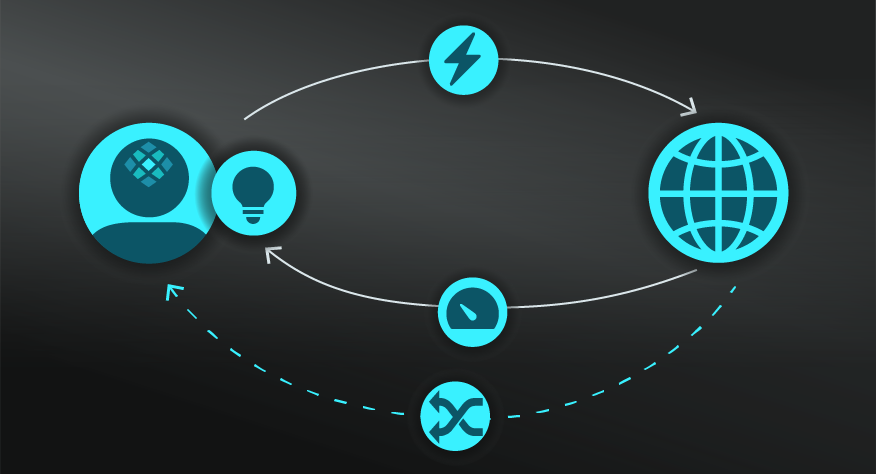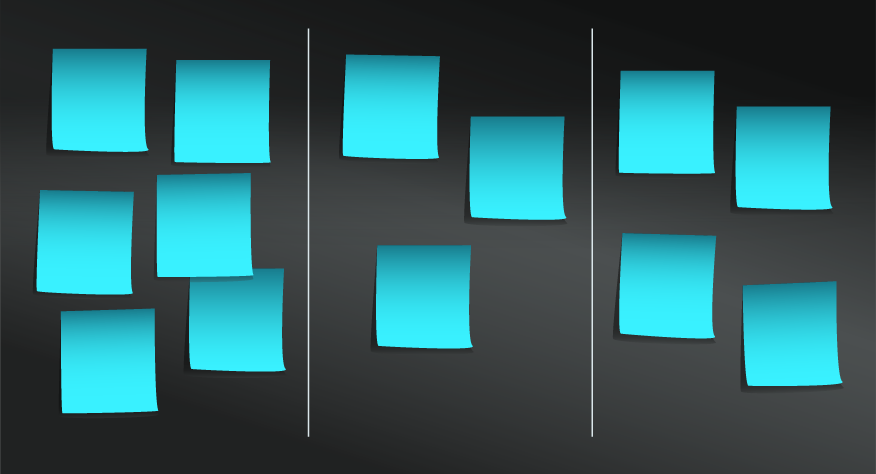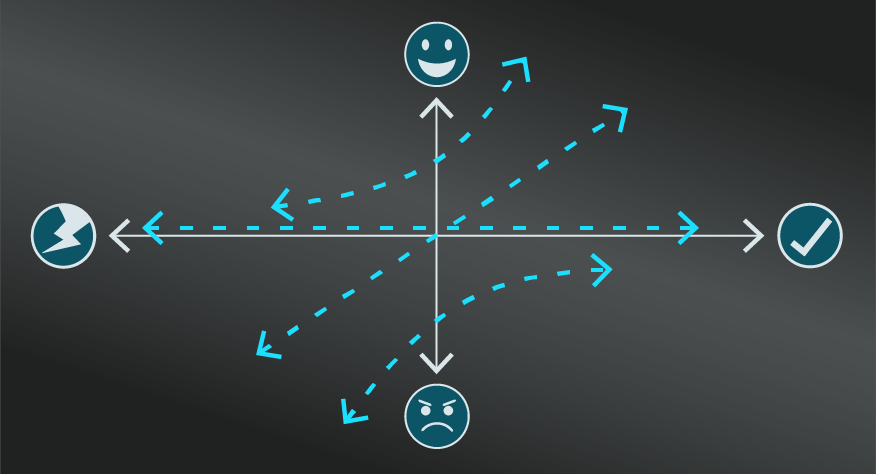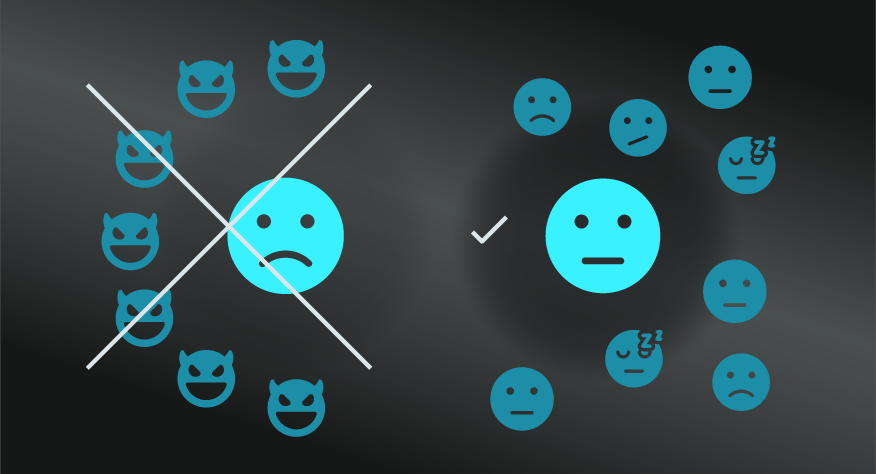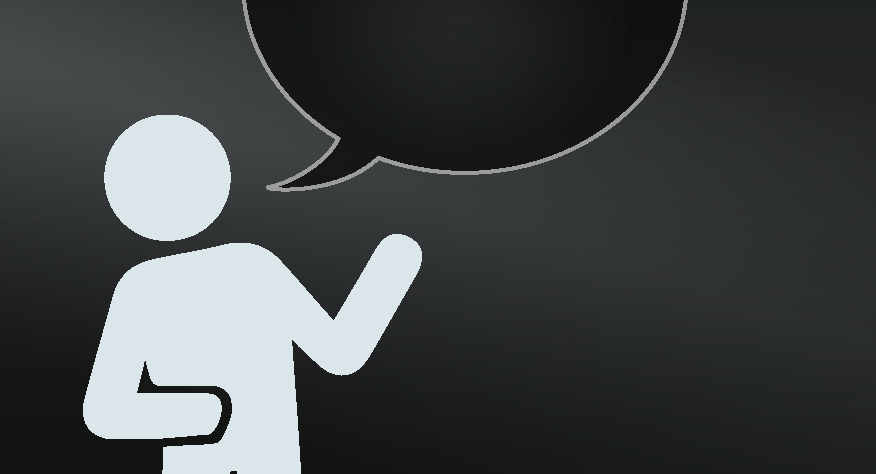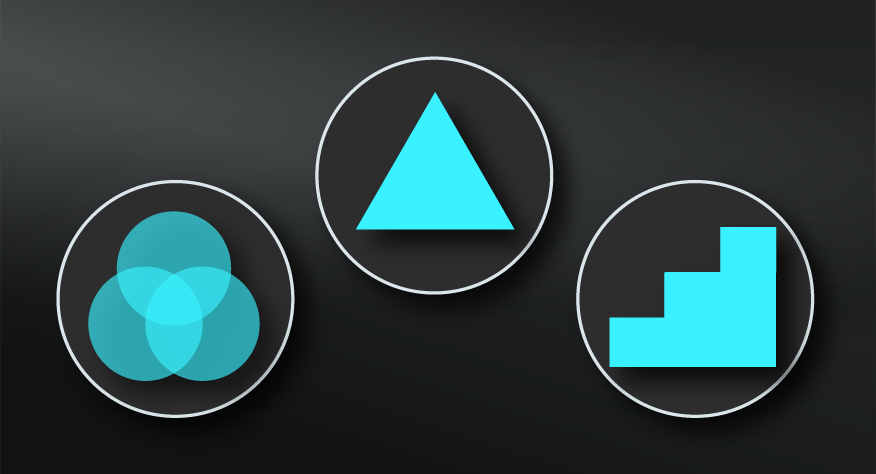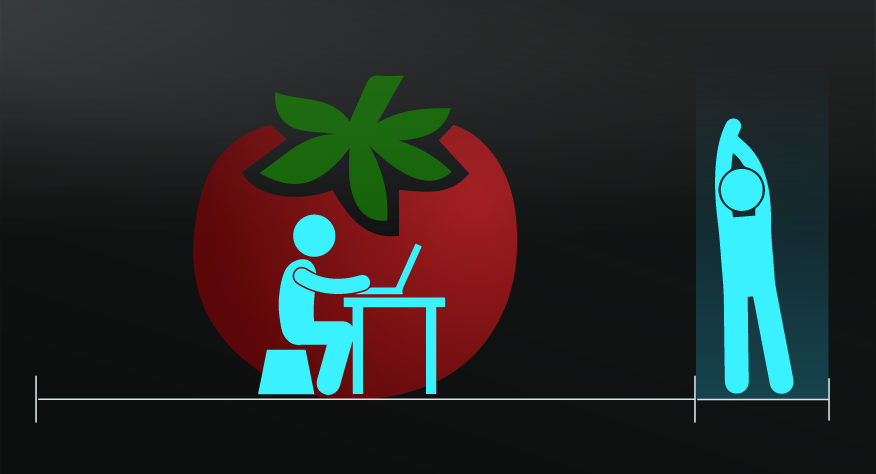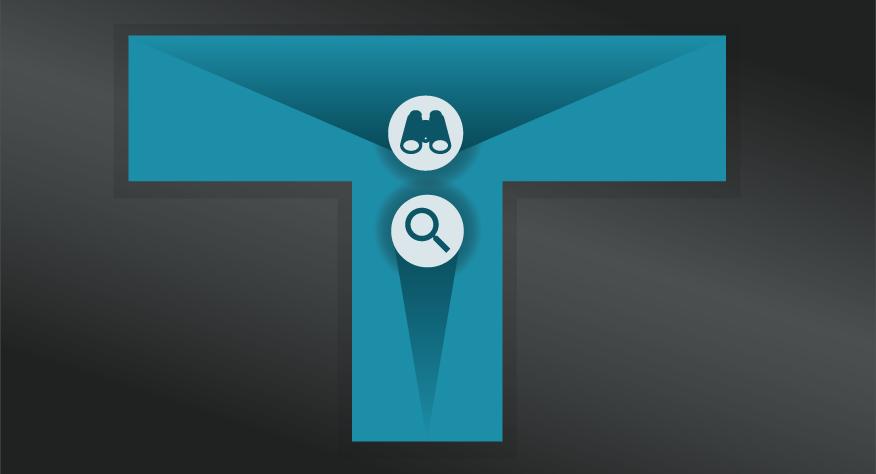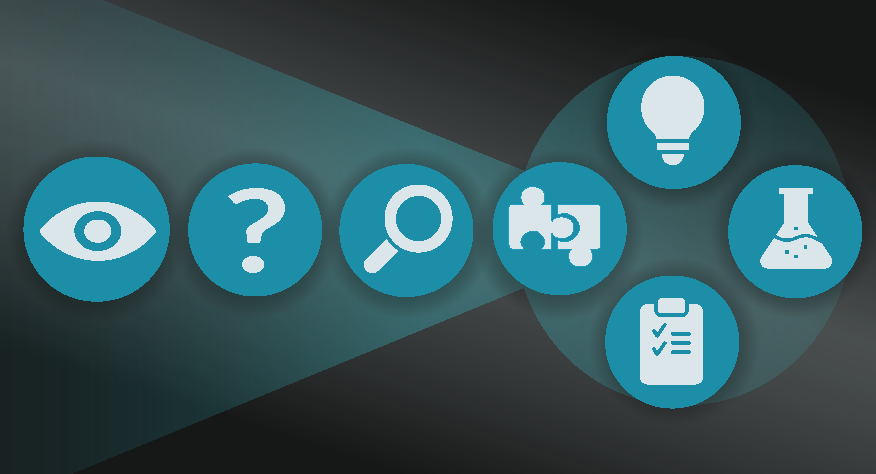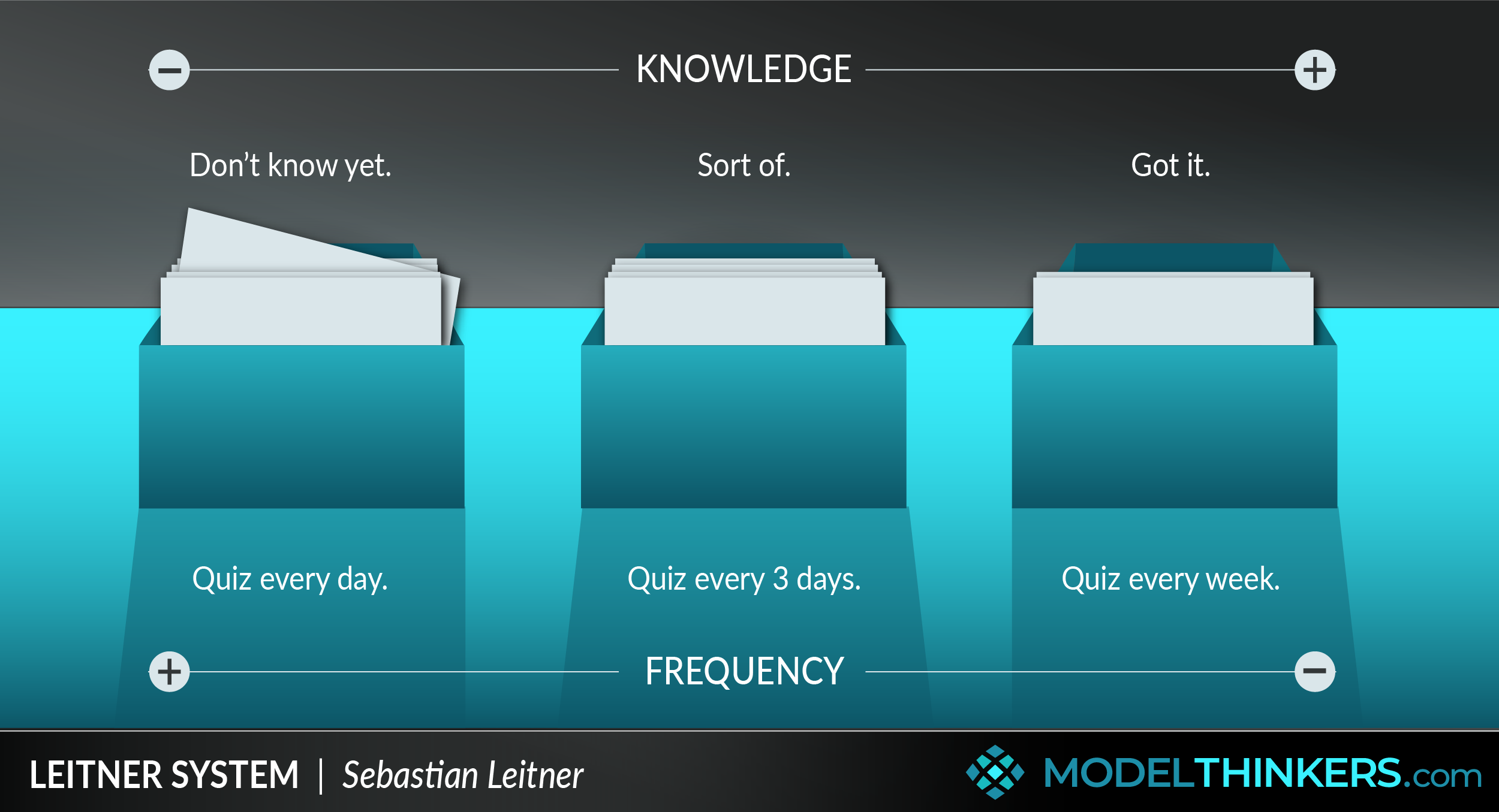

 0 saved
0 saved
 23.5K views
23.5K views








Your Gran was right, old-school flashcards are a surprisingly powerful learning tool. In fact, when it comes to knowledge-based learning, they're close to unbeatable when used in with the Leitner System.
Based on Spaced Retrieval, a highly evidence-based and effective memory hack, this system has inspired modern algorithms in apps as diverse as Duolingo, Anki, Cram and yes, even ModelThinkers!
The Leitner System leverages multiple boxes of flashcards which are organised by your familiarity with the topic. You quiz yourself more frequently on cards you don't know and less on ones you know to effectively embed them into your long term memory.
THREE BOXES.
In its simplest form, the Leitner System involves starting with three boxes of flashcards containing questions and answers on a topic that you wish to learn. Quiz yourself on the cards and place them as follows:
- Box 1: cards you don’t know yet.
- Box 2: cards you sort of know, but aren’t very confident about.
- Box 3: cards you confidently know.
Then, when you test yourself, quiz yourself on
- Box 1 (what you don’t know) every day
- Box 2 (what you sort of know) every few days
- And box 3 (what you know) once a week.
EVIDENCE-BASED
The Leitner System leverages the power of Spaced Retrieval, by effortfully recalling information as you are starting to forget it, to better embed it into long term memory.
It incorporates the spacing element, focusing on longer gaps for content you do know, and the retrieval, by forcing you to answer questions rather than simply 'recognise' content.
FRUSTRATING BUT EFFECTIVE.
While effective, this approach can be counterintuitive and frustrating. Some studies have demonstrated that participants using the method will feel as though they are learning less when compared to crammed sessions of reviewing content, but they are actually embedding the information into long term memory more effectively.
BAKED INTO ALGORITHMS AND APPS.
Many learning apps use variations of this approach. Indeed, the Learn section of ModelThinkers (for members only) provides options to embed mental models into your memory using a Leitner inspired algorithm.
IN YOUR LATTICEWORK.
I've already mentioned the strong link with this model and Spaced Retrieval. In terms of prioritising what knowledge you should commit to memory, consider combining the Leitner System with T-Shaped People and/or Munger's Latticework.
Beyond knowledge, you might want to explore Deliberate Practice for developing more complex skills and Double Loop Learning for challenging mindsets and mental models.




- Choose content to learn and use Leitner flashcards.
Establish the three-box Leitner System for any content you wish to remember. In terms of how often to test yourself, generally, spacing by a few days is sufficient — but the principle is that you want time to ‘start to forget it’ before you actively retrieve it.
- Look for or use the Leitner System in digital solutions.
Trying to learn a language? Pick an app that leverages the Leitner System. Building an app solution? Incorporate this approach into your build.
- Use the ModelThinkers Learn menu to embed mental models.
The ModelThinkers Learn menu leverages the Leitner System and Spaced Retrieval. Once you’re a member you’ll be able to add models to your personal latticework, then you can use the learn section to set reminders for a regular quick quiz. Each quiz only takes a few minutes and challenges you to retrieve models, as you’re forgetting them, for better long term learning.
There are few limitations to this approach which is highly evidence-based. Perhaps the only area of weakness or debate is the timing of sessions, which is still being explored.
Leitner inspired software.
A number of apps use the Leitner System. View this article on Spaced Repetition software and this one on flashcard software as some initial examples.
The ModelThinkers learn function.
Members of ModelThinkers can use the learn function which leverages a Leitner system inspired algorithm. Simply add models to your latticework, then book in regular 5-minute quizzes to embed them to your memory.
The Leitner System is an application of Spaced Retrieval and the system behind the learn section of ModelThinkers.
Use the following examples of connected and complementary models to weave the Leitner system into your broader latticework of mental models. Alternatively, discover your own connections by exploring the category list above.
Connected models:
- Spaced Retrieval: as the model behind this system.
Complementary models:
- Munger’s Latticework: we combine this model with the Leitner system in our learn section.
The system was established in its Flashcard form by German science journalist Sebastian Leitner in the 1970s. View this Wired article about how Piotr Wozniak extended this approach into a popular algorithm approach.
 My Notes
My Notes
Oops, That’s Members’ Only!
Fortunately, it only costs US$5/month to Join ModelThinkers and access everything so that you can rapidly discover, learn, and apply the world’s most powerful ideas.
ModelThinkers membership at a glance:






“Yeah, we hate pop ups too. But we wanted to let you know that, with ModelThinkers, we’re making it easier for you to adapt, innovate and create value. We hope you’ll join us and the growing community of ModelThinkers today.”





